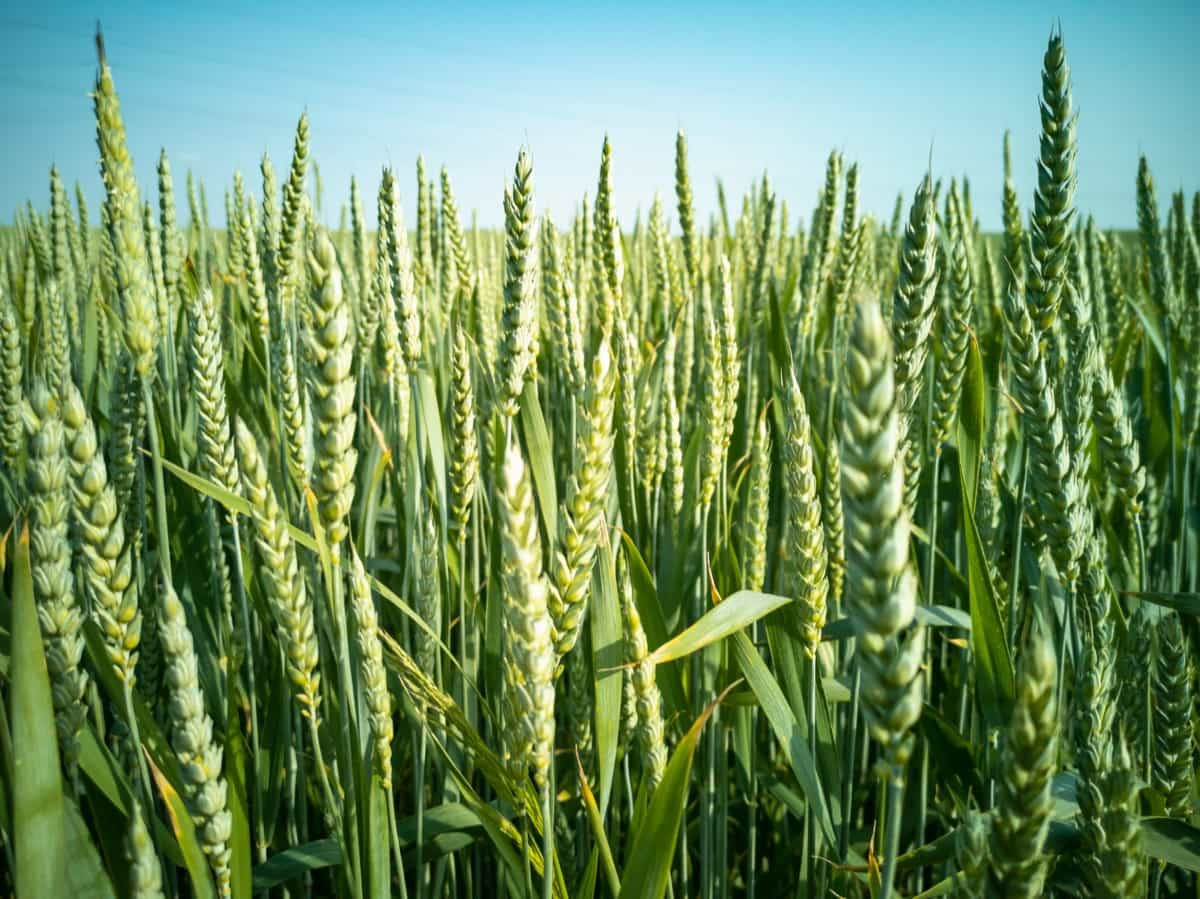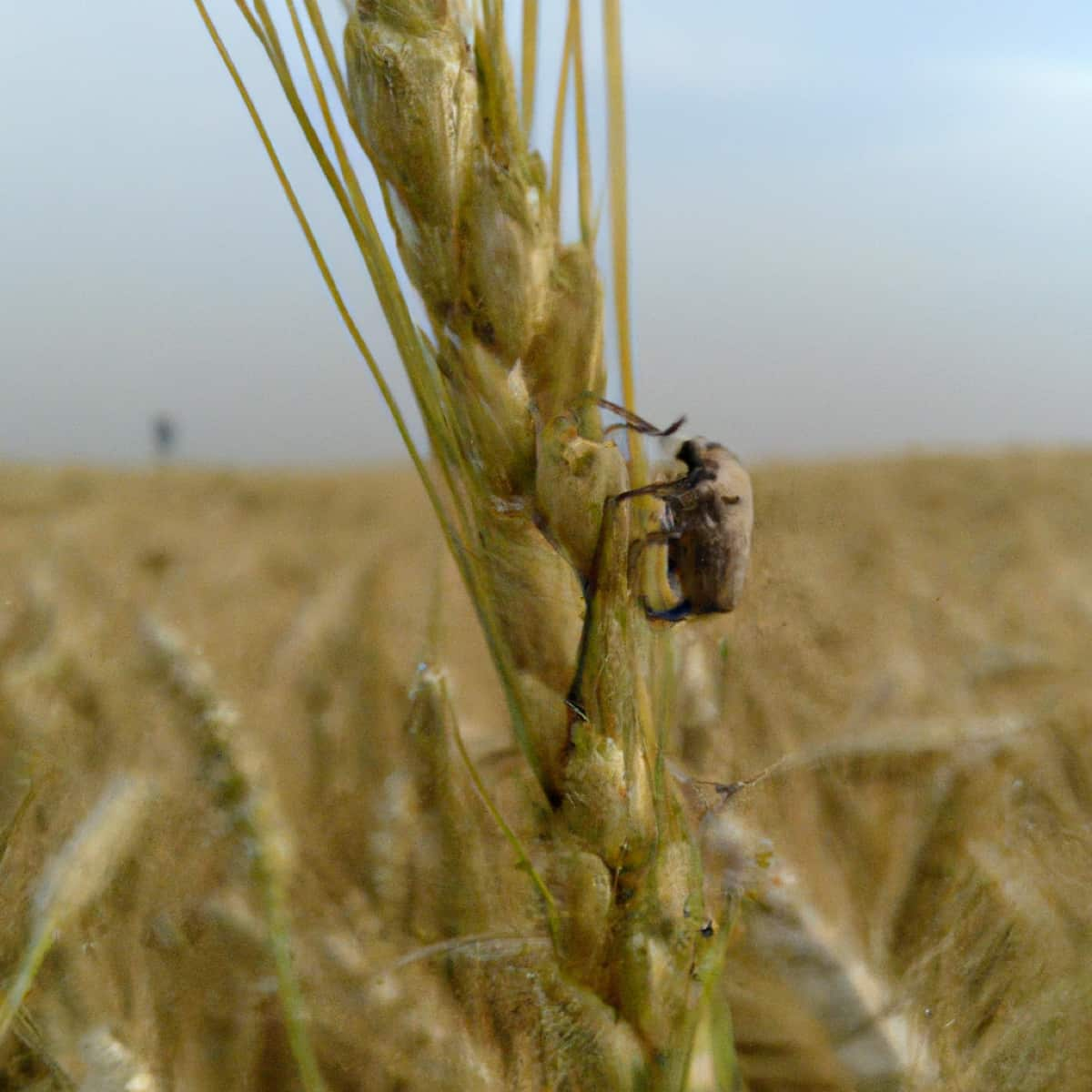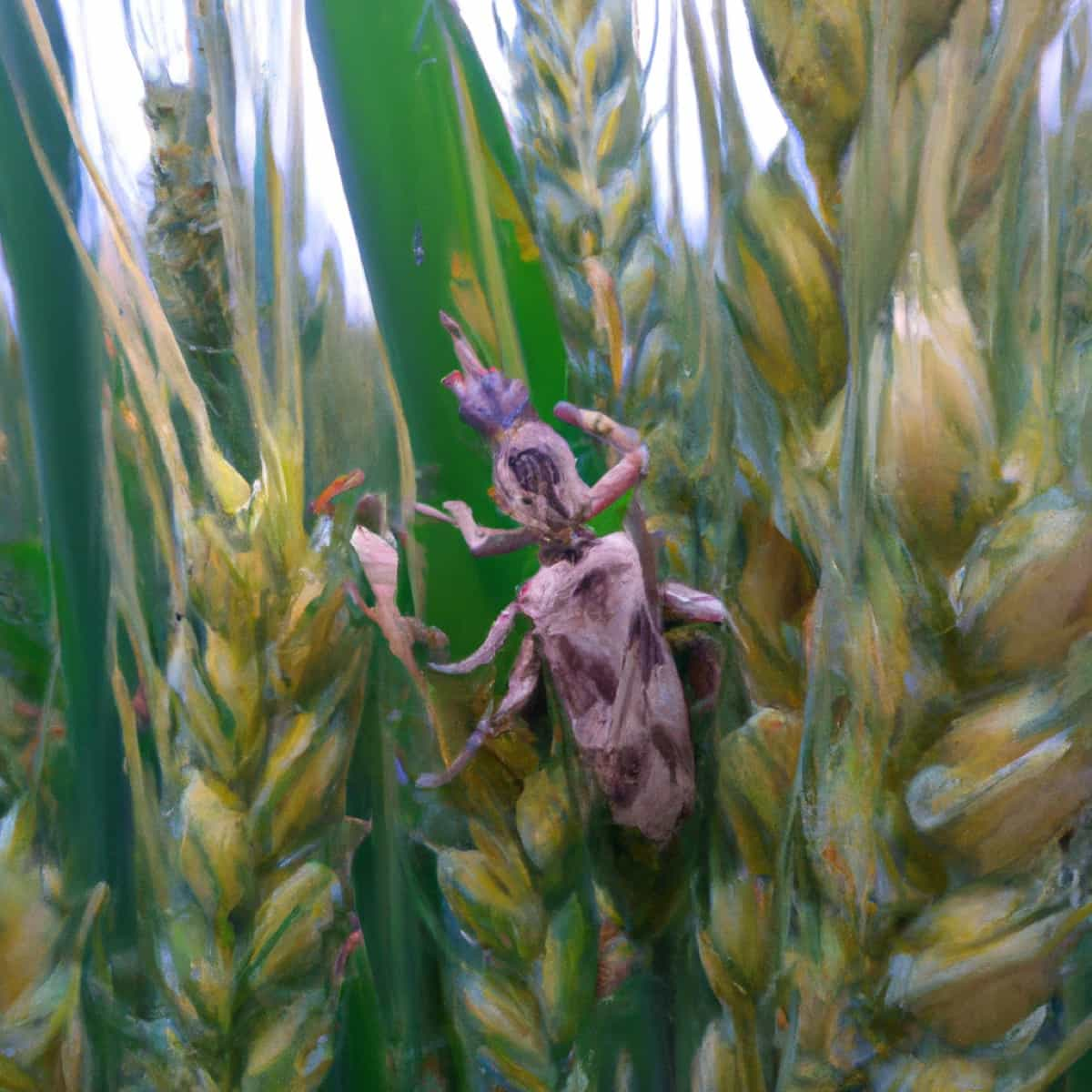Ghujhia Weevil, Tanymecus indicus, is a small beetle that feeds on wheat grains and is native to the Indian subcontinent, belonging to the Family Curculionidae of the Order Coleoptera. It is also known as the Indian or South Asian wheat weevil. This is a major pest of wheat crops and is considered one of the most destructive insect pests in the world.

It is not only a pest of stored grains but also of wheat crops in fields. To effectively manage this pest, it is important to understand its life cycle, its preferred habitats, and the best methods for controlling it. This article will provide an overview and discussion of the Ghujhia weevil pest in wheat crops, including its symptoms, identification techniques, and control.
Wheat Ghujhia Weevil Management in Wheat
Life Cycle of Ghujhia Weevil in Wheat Crop
The life cycle of the Ghujhia weevil pest in wheat crops consists of four stages: egg, larva, pupa, and adult. The female Ghujhia weevil lays eggs in the wheat crop, usually at the base of the stem. These eggs hatch within 8 to 10 days. The larvae that arise from these eggs are known as grubs. They feed on the wheat plant’s grains, leaves, and stems. They feed for about 3 to 4 weeks before they enter the pupal stage. The pupa stage is a resting stage in which the larvae form a protective cocoon in the soil.
This cocoon comprises soil particles and bits of the wheat plant. The pupa remains in the cocoon for 4 to 5 weeks before emerging as an adult weevil. The adult weevil feeds on the wheat plant by puncturing the stems and leaves and sucking out the fluids. The adult weevils can live up to 3 weeks and lay more eggs in the wheat crop. The life cycle of the Ghujhia weevil can be completed in 6 to 8 weeks, depending on the weather conditions. This pest has only one generation in a year.
Occurrence of Ghujhia Weevil in Wheat Fields
- Location of Wheat Ghujhia Weevil: The Ghujhia weevil is a major pest of wheat in India, Bangladesh, Pakistan, Sri Lanka, and some parts of Africa.
- Host Range: Ghujhia Weevil pest is known to feed on various crops, including wheat, barley, gram, and mustard.
Factors Favoring Population Increase of Ghujhia Weevil in Wheat Fields
- Weather conditions – The optimum temperature for the weevil’s activity is 21-27°C, and moderate to high humidity and adequate rainfall favor the growth and spread of the pest.
- Lack of natural enemies – The lack of natural enemies of the Ghujhia weevil in the wheat fields, such as predators and parasites, allows the weevil population to grow and increase.
- Higher reproductive rate – The weevils reproduce quickly and can lay up to 350 eggs in a single season, which can rapidly increase their population.
Identification of Ghujhia Weevil in Wheat Fields
- Egg: The eggs are white, oval, and laid in clusters of up to 30 eggs.
- Larva: The newly hatched larvae are pale yellow and have distinctive brown head.
- Adult: The Ghujhia weevil is a black beetle with yellowish-brown marking on its back, and an oval shape of 2-3 mm in length. It has a long snout used to puncture the wheat grains and feed on them. They have wings but cannot fly.
Damage Symptoms of Ghujhia Weevil in Wheat Fields
- The larvae feed inside the stem and head of the wheat plant, causing them to become weakened and discolored, and the leaves may die off.
- In severe infestation, they can cause the stem and head of the plant to become pitted and distorted, resulting in reduced seed production.
- The adult weevils feed on and cause significant damage to the plant’s foliage, resulting in yellowing and wilting of the leaves.
- The infestation will be at its peak level between October – November. The adults feed only on leaves and young shoots.
In case you missed it: Stem Rust Disease Management in Wheat: Symptoms, Treatment, Chemical, Biological, Natural, and Organic Control

Percentage of Yield Lose in Wheat due to Ghujhia Weevil
Generally, an average of 20 to 30 percent of the total wheat crop can be lost due to the presence of the Ghujhia weevil. The Ghujhia weevil is most active during June and July when the wheat crop is most vulnerable. In heavy infestations, the yield losses can be as high as 50 percent or more.
Cultural Control of Ghujhia Weevil in Wheat Fields
- Resistant Varieties – Resistant varieties are those which are less susceptible to attack by the pest. These varieties should be planted in fields that pests have not infested in the past.
- Crop Rotation – Crop rotation helps reduce the pest’s infestation as the crop residue from a particular crop is not available in the same field for the next season. This reduces the number of adult Ghujhia weevils in the field.
- Sanitation – The field should be clean and free of debris and weeds.
- Sowing Time – The crop should be sown at the right time to reduce the infestation of the pest. Early sowing helps to reduce the number of adult Ghujhia weevils in the field.
- Trapping – Traps can be set up in the field to capture adult Ghujhia weevils. This helps to reduce the pest population in the field.
Biological Control of Ghujhia Weevil in Wheat Fields
- Natural enemies such as parasitoid wasps and predatory mites. These natural enemies feed on the weevil larvae and can significantly reduce their numbers.
- Parasitoid wasps like Trichogramma evanescens are small, stingless wasps that lay eggs inside the weevil larvae. When the eggs hatch, the wasp larva will consume the weevil larvae from the inside out, killing them.
- “Predatory mites feed on the larvae, eggs, and adults of the weevil. They can be applied directly to the wheat field or released as a”“predator bank,” which provides a continuous supply of predatory mites to the field.”Predatory mites feed on the larvae, eggs, and adults of the weevil. They can be applied directly to the wheat field or released as a “predator bank,” which provides a continuous supply of predatory mites to the field.
- Natural predators such as lady beetles, lacewings, and spiders can help control the ghujhia weevil in wheatfields.
Chemical Control of Ghujhia Weevil in Wheat Fields
- Apply Carbaryl or Malathion 5D @ 25 kg per hectare by dusting application method.
- Some other commonly used insecticides are carbamates, organophosphates, and pyrethroids. Carbamates act quickly to kill adult weevils. Organophosphates are also effective, but must be applied more often because they do not persist as long as carbamates. Pyrethroid insecticides are less effective than the other two but can provide some control.
- Insecticides must be applied before the eggs are laid, usually at the beginning of the growing season. This ensures the eggs are destroyed before they can hatch and the adult weevils can feed on the crop.
Preventive Measures for Control of Ghujhia Weevil in Wheat Fields
- Practice crop harvesting when the crop is still green. This helps to reduce the number of adult weevils in the field.
- The water should be applied in such a way that the pests are not able to breed in the water.
- Planting the wheat crop early can help to reduce the population of ghujhia weevil in wheatfields as the pest will have less time to reproduce.
In case you missed it: Powdery Mildew Disease Management in Wheat: Symptoms, Treatment, Chemical, Biological, Natural, and Organic Control

Conclusion
The ghujhia weevil is a devastating pest of wheat crops and is responsible for considerable annual losses in the yield and quality of wheat. Its capacity to cause damage is enhanced by its ability to reproduce rapidly, its wide range of host plants, and its resistance to several insecticides.
To reduce the losses caused by this pest, integrated pest management strategies should be adopted, such as using resistant varieties, cultural control methods, and biological control agents. In addition, the judicious use of insecticides can provide short-term relief but should be used only as a last resort. With proper management, the losses caused by the ghujhia weevil can be minimized, and wheat production can be sustained in the long run.
- Deworming Schedule for Dogs/Puppies: A Beginners Guide
- How to Prevent and Control Parasites in Goats
- Beneficial Insects in Pest Management
- Natural Solutions for Pest Control in Flower Gardens
- Types of Fungicides Used in Agriculture
- Common Issues in the Fruit Development Stage of Pomegranate Farming
- Fruit Development Issues in Papaya: Easy Solutions and Treatment
- Soil-Borne Diseases and How to Protect Your Plants
- Practices to Prevent Disease Spread in the Garden